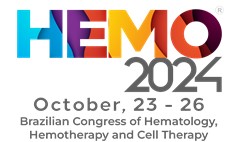
Exploration and innovation are 2 hallmarks of human endeavor. Human travel to the moon was accomplished in 1969 by the US. There are now plans to return to the moon in the Artemis mission in the next few years and then to travel to Mars. For perspective the direct distance to the Moon is 383,000 km whilst a mission to Mars could vary between 55‒400, 000, 000 km. and could take about 3-years for a return trip. Besides the technical challenges of a journey to Mars there are important medical challenges including: (1) Space radiation; (2) Micro-gravity; (3) A hostile, closed environment; (4) Isolation and confinement; and (5) Distance from Earth. Radiation is an important hazard for human inter-planetary space flight. There are potential health consequences, immediate and long-term. The immediate potential risks are: (1) Acute radiation syndromes; and (2) Neuro-ocular disturbances whereas the long-term consequences include: (1) Cancer; (2) Cardio-vascular disease; (3) Cataracts; and (4) Degenerative diseases. Sources of radiation on a journey to Mars include: (1) Trapped charged particles and high energy electrons (Van Allen belts); (2) Galactic cosmic rays; and (3) Solar events (charged particles & UV). Galactic cosmic rays include: (1) High energy/high charge ions; (2) High energy protons; (3) Secondary protons; (4) Neutrons; and (5) Fragments produced by interactions with the spacecraft shielding and human tissues. Solar particle events include: (1) Solar winds; (2) Coronal mass ejections; and (3) Low to medium energy protons. The Earth’s magnetosphere protects us from much of this radiation, but this protection is lost on a journey to Mars. The Artemis-1 mission which recently circumnavigated the Moon is providing data on radiation exposure. Our normal background radiation dose on Earth is about 2.4 mSv/year whereas journey to Mar could expose astronauts to 300‒600 mSv over 3-years. Concernedly, damage to DNA produced by heavy charged ions encountered in space is different and probably more dangerous than our exposure to ionizing radiations on Earth. Several mitigation measures have been developed including: (1) Spacecraft shielding; (2) Crew shielding; (3) Spacecraft positioning; (4) Mission planning; (5) Radiation storm shelters; (5) Limited spacewalks; (6) Crew selection and others. My conclusions are: (1) Radiation is an important hazard of inter-planetary travel; (2) There are immediate and long-tern consequences of high radiation exposures; (3) Interventions are needed to reduce radiation risk; (4) There are important knowledge gaps regarding long-term adverse events; and (5) We need to train a new generation of physicians to deal with these challenges.






